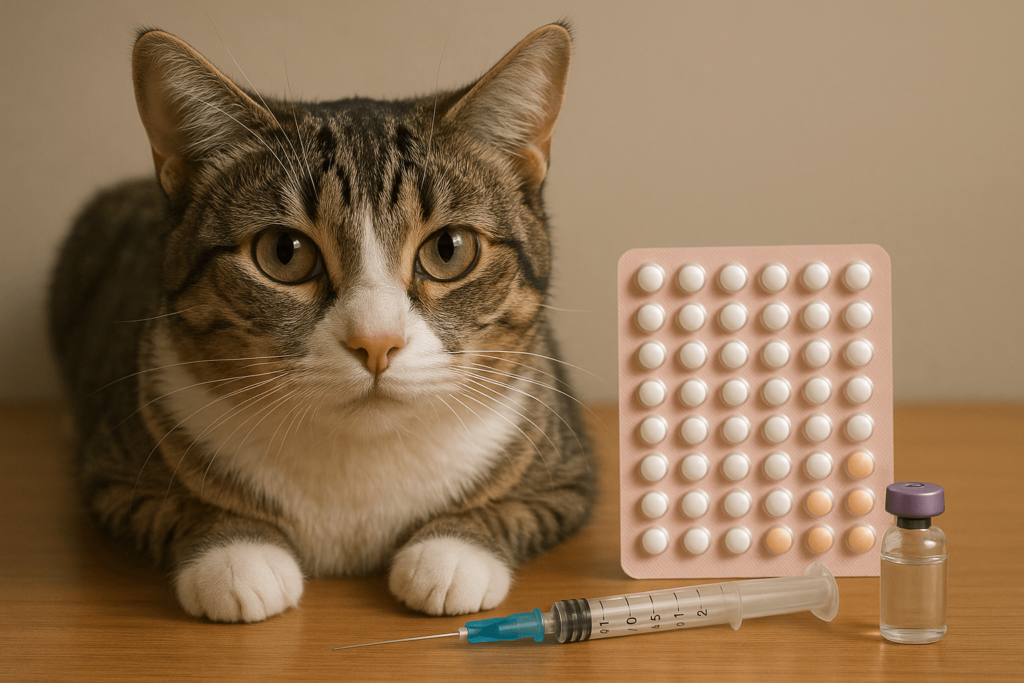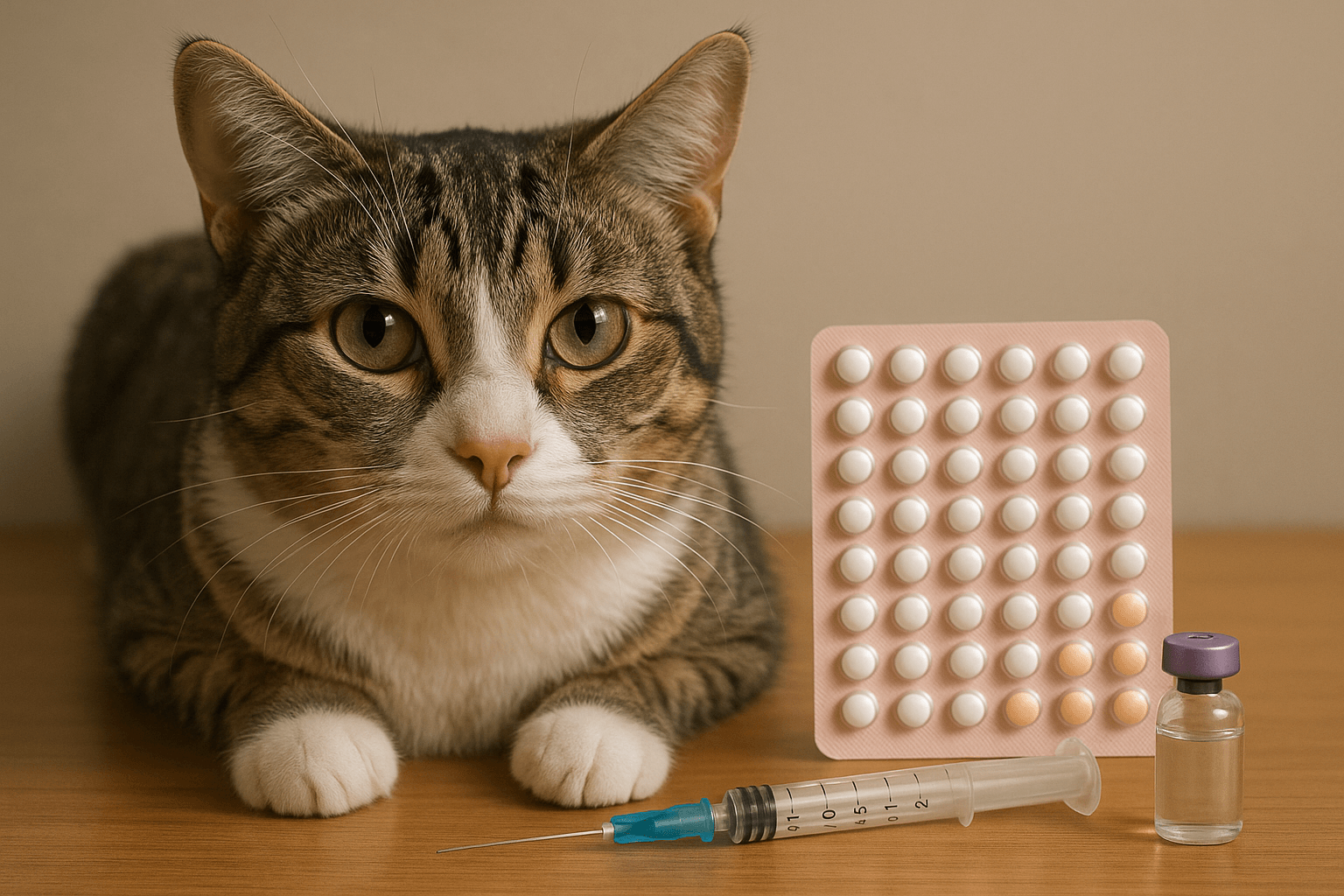Birth Control for Cats: The Essential Guide to Safe, Responsible Population Management
Cats are beloved companions — but uncontrolled breeding can lead to overpopulation, suffering, and strained shelters. Birth control for cats isn’t just a convenience; it’s a compassionate responsibility. Whether you’re a pet owner considering spaying or neutering, or simply seeking alternatives to traditional surgery, understanding your options is critical. This guide explores every facet of feline birth control — from surgical sterilization to medical methods — helping you make informed, ethical decisions that protect your cat’s health and reduce the toll on communities.
Why Birth Control for Cats Is More Than Just a Convenience
Birth control for cats isn’t about limiting natural behavior — it’s about honoring it with wisdom. Domestic cats reproduce rapidly, and without intervention, a single female and her offspring can produce over 370,000 descendants in just seven years. This isn’t theoretical — it’s a documented reality in animal shelters worldwide.
Prevents Overpopulation: Unplanned litters flood shelters, leading to euthanasia of healthy animals due to lack of homes.
Reduces Stray Populations: Free-roaming cats face disease, injury, and starvation — birth control helps break this cycle.
Improves Longevity: Spayed and neutered cats live longer, healthier lives with lower risks of cancer and infection.
Minimizes Behavioral Issues: Unaltered cats are more likely to roam, fight, spray, and vocalize loudly — all reduced by sterilization.
Supports Community Health: Fewer stray cats mean fewer public health risks, including zoonotic diseases and nuisance complaints.
Birth control for cats is not an act of control — it’s an act of care. It gives your cat a better life and protects countless others from suffering.

The Most Common Forms of Birth Control for Cats
When it comes to managing feline reproduction, several proven methods exist — each with distinct benefits, risks, and suitability depending on your cat’s age, health, and lifestyle.
Surgical Spaying (Ovariohysterectomy): The removal of the ovaries and uterus — the gold standard for permanent, irreversible birth control for cats.
Surgical Neutering (Orchiectomy): Removal of the testicles in male cats — a quick, safe procedure that eliminates testosterone-driven behaviors.
Chemical Sterilization (Injections): Non-surgical options like Zeuterin or Suprelorin implants that temporarily suppress reproductive hormones.
Oral Contraceptives: Rarely used due to serious side effects, but sometimes prescribed off-label under strict veterinary supervision.
Intrauterine Devices (IUDs): Experimental in cats; not FDA-approved and generally not recommended due to infection risks.
Each method has a place — but surgical sterilization remains the most effective, safest, and most widely recommended approach for long-term population control. Always consult your vet to determine the best option for your individual cat.
Check this guide 👉Creating the Perfect Cat Birthing Box: Best 7 Health Tips!
Check this guide 👉What to Do After a Cat Gives Birth: Best 7 Expert Tips!
Check this guide 👉Can a Spayed Cat Get Pyometra? Best 7 Expert Tips!
| Surgical Methods | Non-Surgical Methods |
|---|---|
| Spaying removes ovaries and uterus — permanent solution | Suprelorin® implant suppresses hormones for up to 2 years |
| Neutering removes testes — stops sperm and reduces aggression | Oral contraceptives carry high health risks — not recommended |
| Performed under general anesthesia — safe with proper care | No incisions or recovery time — ideal for feral colonies |
| Eliminates heat cycles and mating behaviors | Temporary — requires repeat treatments |
| Reduces cancer risk and improves lifespan | Limited availability and not FDA-approved for long-term use |
Myths About Birth Control for Cats — Debunked
Misinformation about sterilization persists — often fueled by emotional attachment or outdated beliefs. Let’s clear the air.
Myth: “My cat should have one litter before being spayed.”
There is no medical or behavioral benefit to allowing a cat to reproduce. Early spaying is safer and more protective.Myth: “Spaying makes cats fat and lazy.”
Weight gain is due to overfeeding and lack of exercise — not sterilization. Adjust diet and playtime, and your cat stays fit.Myth: “Neutering changes my cat’s personality.”
It reduces aggression and roaming, but doesn’t dull their spirit. Most cats become calmer, more affectionate companions.Myth: “It’s too expensive.”
Many shelters and clinics offer low-cost or subsidized sterilization programs. The cost of caring for a litter far exceeds the cost of surgery.Myth: “Only stray cats need birth control.”
Even indoor-only cats can escape. Accidental breeding happens — and it’s preventable.
Birth control for cats isn’t about changing who they are — it’s about protecting their future.
When Is the Best Time to Sterilize Your Cat?
Timing matters. The ideal window for sterilization balances safety, development, and behavioral outcomes.
As Early as 8 Weeks: Pediatric spay/neuter is safe and widely endorsed by the AVMA. Faster recovery, lower complication rates.
Between 4–6 Months: Most vets recommend this window before the first heat cycle in females and before marking behavior begins in males.
For Adult Cats: Sterilization is still safe and beneficial at any age — even seniors can benefit from reduced cancer risk.
Before First Heat: Spaying before the first estrus dramatically reduces mammary tumor risk. Delaying increases danger.
After Kitten Season: If you’re adopting a stray, wait until after the spring/summer surge to avoid contributing to the cycle.
There’s no “too old” for sterilization — only “too late.” If your cat hasn’t been fixed, the best time is now.
Alternatives to Surgery: What You Need to Know
While surgery remains the gold standard, newer options are emerging — but they come with important caveats.
Suprelorin Implants: A slow-release hormone implant that suppresses reproduction for 6–12 months. Ideal for temporary control or high-risk surgical candidates.
Zeuterin (Zinc Gluconate): A non-surgical injection for male cats that destroys sperm-producing tissue. Preserves testosterone, so behavior changes are less dramatic.
Hormonal Pills or Injections: Used in rare cases for medical reasons, but linked to diabetes, liver disease, and mammary tumors. Avoid unless absolutely necessary.
Contraceptive Vaccines: Still experimental in cats. No commercially approved options exist in the U.S. or EU as of 2025.
Behavioral Training Alone: Cannot replace birth control. Cats are driven by biology, not logic. Training won’t stop mating urges.
These alternatives may be useful in specific cases — but they are not replacements for sterilization in most households. Always discuss long-term safety with your vet.
How Birth Control for Cats Helps Communities
Sterilization doesn’t just help your cat — it transforms neighborhoods, shelters, and ecosystems.
Reduces Shelter Euthanasia: Over 1 million cats are euthanized annually in the U.S. alone due to overpopulation — sterilization prevents this.
Lowers Public Costs: Cities spend millions on trapping, sheltering, and euthanizing strays. Community spay/neuter programs cut these costs by up to 70%.
Protects Wildlife: Free-roaming cats kill billions of birds and small mammals each year. Fewer strays mean less ecological damage.
Improves Human Safety: Fewer fights and territorial disputes mean fewer bites, scratches, and neighborhood conflicts.
Encourages Responsible Ownership: When sterilization becomes the norm, people see pets as long-term companions — not disposable breeding stock.
Your decision to sterilize your cat ripples outward. It’s not just a personal choice — it’s a civic act of compassion.
What to Expect Before, During, and After Sterilization
Knowing what to expect reduces anxiety — for you and your cat.
Before Surgery: Your vet will perform a health check. Fast your cat overnight. Bring a carrier and a warm blanket.
During Surgery: Most procedures take under 30 minutes. Your cat will be under general anesthesia and closely monitored.
After Surgery: Expect mild lethargy for 24–48 hours. Keep your cat quiet, indoors, and prevent licking the incision.
Recovery Time: Most cats bounce back in 3–5 days. Sutures dissolve or are removed in 10–14 days.
Behavioral Changes: Appetite may increase — adjust portions. Aggression and spraying typically decrease within weeks.
Follow your vet’s aftercare instructions precisely. Most cats return to normal behavior faster than owners expect.
Frequently Asked Questions About Birth Control for Cats
Is it cruel to sterilize a cat?
No. It prevents the suffering of countless unwanted kittens and protects your cat from life-threatening diseases. Sterilization is an act of kindness.
Will my cat be sad or depressed after being fixed?
Cats don’t experience emotional loss over reproduction. They feel relief from hormonal drives. Most become calmer and more affectionate.
Can I spay my cat while she’s in heat?
Yes — but it’s slightly more complex and costly. It’s safer to wait until after the cycle ends unless there’s a medical emergency.
How much does sterilization cost?
Prices range from $50–$200 depending on location. Many nonprofits offer free or low-cost services. Call your local animal shelter.
Do male cats need to be neutered if they’re indoor-only?
Yes. Even indoor males can escape. Neutering prevents spraying, roaming, and aggression — and protects them if they ever get out.
Embracing Responsibility: Birth Control for Cats as an Act of Love
Birth control for cats isn’t about denying nature — it’s about honoring it with wisdom. It’s about choosing compassion over convenience, foresight over impulse, and life over loss. Every cat deserves a home. Every kitten deserves a chance. And every owner has the power to make that possible.
By choosing sterilization, you’re not just preventing litters — you’re preventing suffering. You’re giving your cat a longer, healthier life. You’re easing the burden on shelters. You’re protecting wildlife. You’re setting an example.
Canned Pumpkin for Cat Diarrhea: Best 7 Expert Tips! Natural remedy to firm stools, soothe upset bellies, and support gut health safely.
Can a Cat Give You Scabies? Best 7 Expert Tips! Discover the truth about feline mites, human skin risks, and how to protect yourself—without panic.
Cat Flea vs Human Flea: Best 7 Expert Tips! Discover the truth about bites, species, and how to eliminate infestations for good.
Weird Cat Behaviors: Best 7 Expert Tips! Discover why cats do strange things—and how to understand, not punish, their instincts for a happier home.





